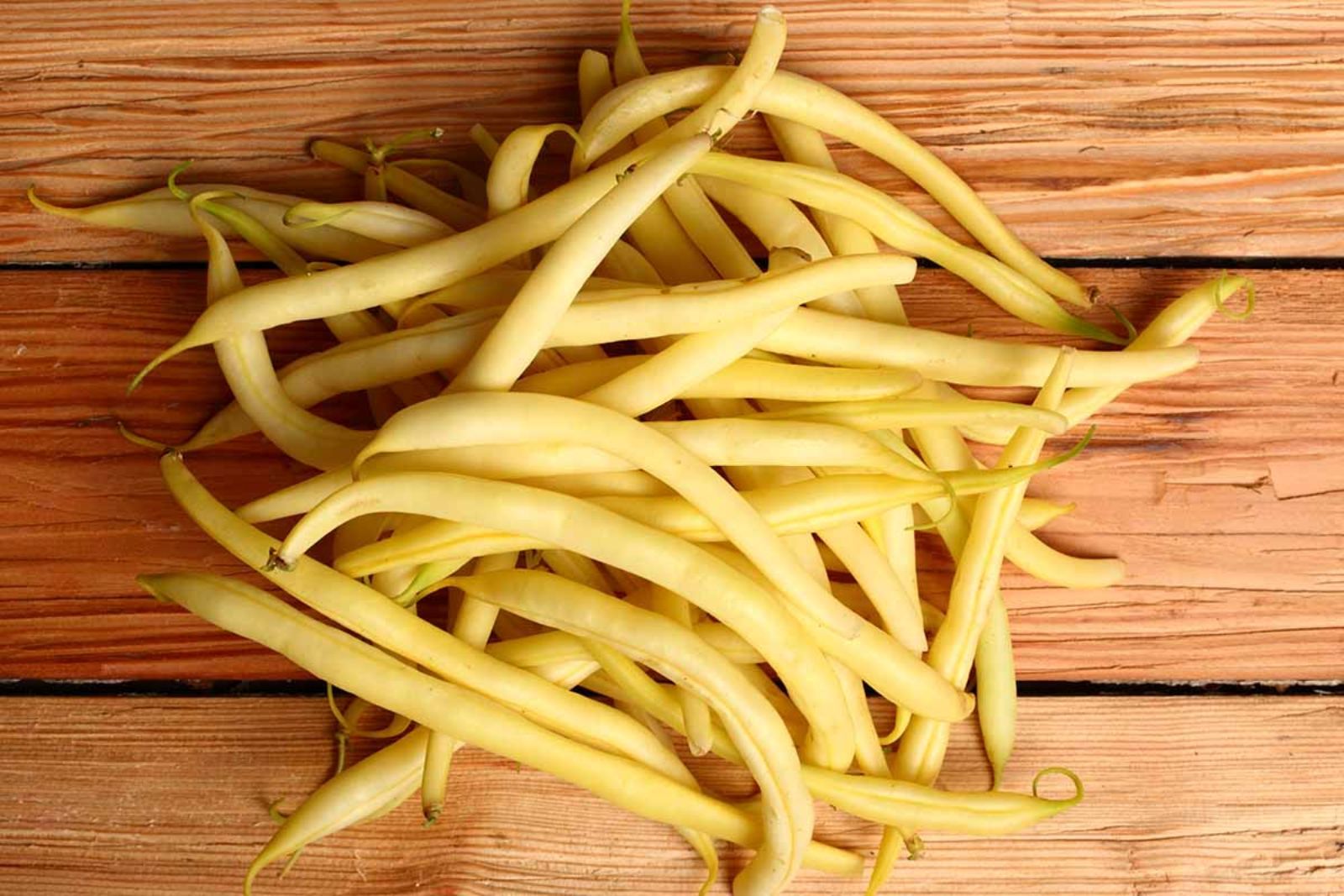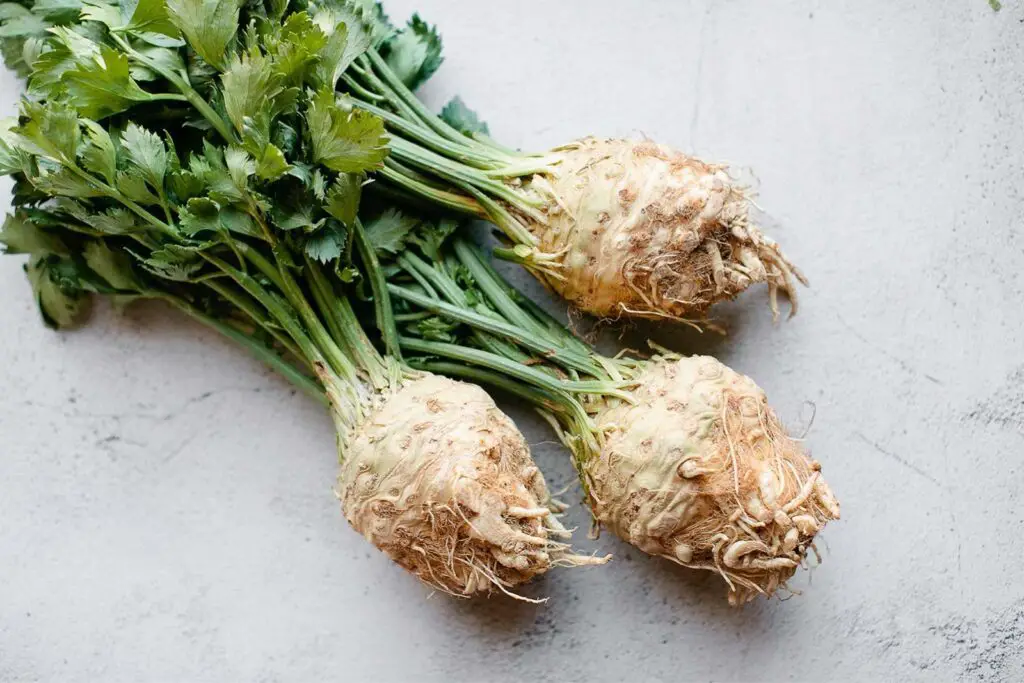
Yellow beans, often referred to as wax beans, are a delightful addition to any garden or dinner table. These slender, vibrant pods are bursting with flavor and nutrition, making them a favorite choice for many home gardeners and cooks. Freezing yellow beans is an excellent way to preserve their freshness, allowing you to enjoy their summery goodness even during the off-season. In this article, we will guide you through the simple steps to freeze yellow beans properly, ensuring they maintain their color, texture, and flavor for future use.
Here’s a comprehensive guide on how to freeze yellow beans:
- Step 1: Select fresh yellow beans
- Step 2: Wash and trim the beans
- Step 3: Blanch the yellow beans
- Step 4: Drain and dry the beans
- Step 5: Arrange the beans for freezing
- Step 6: Flash-freeze the yellow beans
- Step 7: Package and seal the yellow beans
- Step 8: Label and date the packages
- Step 9: Store in the freezer
Step 1: Select fresh yellow beans
Selecting fresh yellow beans is the foundation for successfully freezing these delightful vegetables. Whether you are harvesting them from your own garden or picking them up at a local market, this initial step sets the stage for preserving their vibrant flavor and texture.
Here’s why selecting fresh yellow beans is important:
- Flavor and Nutrition: Freshness directly impacts the taste and nutritional value of your yellow beans. Young and tender beans are bursting with flavor and have a pleasing, crisp texture. They are also at their peak in terms of nutritional content, providing essential vitamins and minerals.
- Color and Appearance: Vibrant yellow beans are not only visually appealing but also indicate their freshness. Avoid beans that have turned dull or developed brown spots, as these are signs of overripening or age. Fresh beans should have a bright and uniform color.
- Texture: When you touch fresh yellow beans, they should feel firm and snap easily. This snap is a sign of their crispness and tenderness. Older beans tend to be tougher and may lack the desirable crunch.
- Reduced Risk of Spoilage: Selecting fresh beans that are free from blemishes or signs of decay reduces the risk of spoilage during the freezing process. Damaged or moldy beans can affect the overall quality of your frozen batch.
Tips for selecting fresh yellow beans:
- If you’re purchasing yellow beans from a market, choose ones that have been stored in a refrigerated section to maintain their freshness.
- When buying in bulk, examine the beans carefully for any visible imperfections, and ensure they are stored in a clean and well-maintained display area.
- If you’re growing your own yellow beans, harvest them when they reach the desired length, typically around 2 to 3 inches. Younger beans are generally more tender and flavorful.
Step 2: Wash and trim the beans
Once you’ve selected the freshest yellow beans, the next crucial step in preparing them for freezing is to wash and trim them properly. This step ensures that your beans are clean, free from any contaminants, and the right size for your preferred culinary applications.
Here’s why washing and trimming is important:
- Removal of Dirt and Debris: Yellow beans, like any produce, can accumulate dirt, dust, or other contaminants during harvesting and transportation. Washing them under cold running water helps remove these impurities, making your beans safe to consume.
- Enhanced Food Safety: Washing beans also contributes to food safety by reducing the risk of bacterial contamination. Cleaning the beans thoroughly helps prevent the spread of pathogens that may be present on the surface.
- Improved Aesthetic Appeal: Trimming the ends of the beans not only makes them more visually appealing but also removes any tough or woody portions. This step ensures that your yellow beans are uniformly tender and ready to be incorporated into a variety of dishes.
How to wash and trim yellow beans:
- Rinse Under Cold Water: Place your gathered yellow beans under cold running water in a colander or strainer. Gently rub them with your fingers to remove any dirt or residue. This process should be thorough but gentle to avoid damaging the beans.
- Trim the Ends: After washing, it’s essential to trim the ends of the beans. The ends can be tougher and less flavorful, so removing them ensures a consistent and enjoyable texture. You can use a sharp knife or kitchen shears for this task. Typically, beans are trimmed to a length of about 2 to 3 inches, but you can adjust this according to your preference and specific recipes.
- Uniform Size: Cutting the beans to a uniform size also ensures even cooking and presentation in your dishes. This step is particularly important if you plan to use the frozen beans in recipes where consistency matters.
Quick tip: If you want to save time when using the frozen beans later, you can also blanch and trim them to the desired size before freezing. This way, they’ll be ready to use directly from the freezer without the need for additional preparation.
Step 3: Blanch the yellow beans
Blanching is a vital and often overlooked step when it comes to preserving the vibrant color, crisp texture, and delightful flavor of yellow beans. It may seem like an extra effort, but it plays a significant role in maintaining the quality of your beans during freezing. Here’s why:
- Color Preservation: The vibrant yellow color of these beans is one of their most attractive features. Blanching helps lock in this vivid hue by deactivating enzymes responsible for color changes. Without blanching, the beans may turn a dull greenish-yellow or even brown during freezing and storage.
- Texture Maintenance: Yellow beans are prized for their crisp and tender texture. Blanching helps partially cook the beans, making them more freezer-friendly. It softens the cell walls slightly, allowing the beans to maintain their firmness after freezing and thawing. Without blanching, beans can become tough or mushy when frozen.
- Flavor Retention: Blanching briefly cooks the beans, which helps retain their natural flavors. It also helps remove any unwanted grassy or bitter notes that might be present in raw beans.
How to blanch yellow beans:
- Boil Water: Start by filling a large pot with water and bringing it to a rolling boil. It’s essential to have enough water to cover all the beans adequately.
- Prepare Ice Water: While the water is heating, set up a large bowl filled with ice water. This will be used to cool the beans rapidly after blanching.
- Blanch the Beans: Once the water is boiling vigorously, carefully lower the prepared yellow beans into the pot. Ensure they are fully submerged. Allow them to blanch for about 2 to 3 minutes. The beans will turn bright green during this process.
- Cool Quickly: After blanching, promptly transfer the beans to the bowl of ice water. This rapid cooling stops the cooking process and locks in the vibrant color and crispness. Leave the beans in the ice water for the same amount of time they were blanched (2 to 3 minutes).
Blanching tips:
- It’s essential to blanch in small batches to ensure that the water remains at a rolling boil throughout the process.
- Use a timer to keep track of the blanching time accurately, as over-blanching can lead to a loss of flavor and texture.
Can I freeze yellow beans without blanching them first?
Blanching is recommended to maintain color and texture, but you can freeze beans without blanching. However, expect a potential loss of quality in terms of color and texture.
Step 4: Drain and dry the beans
Once you’ve blanched your yellow beans and cooled them in ice water, it’s essential to take the extra step of draining and drying them thoroughly. This step might seem minor, but it plays a critical role in ensuring the quality of your frozen beans. Here’s why:
- Preventing Freezer Burn: Freezer burn occurs when moisture on the surface of food turns into ice crystals, which can cause dehydration and a loss of quality. By thoroughly draining and drying the beans, you remove excess moisture, reducing the risk of freezer burn. This is especially important for maintaining the beans’ texture and flavor during storage.
- Minimizing Ice Formation: Excess moisture on the surface of your yellow beans can lead to the formation of ice crystals when they are frozen. These ice crystals can damage cell walls, resulting in a mushy texture when the beans are thawed and cooked.
How to drain and dry yellow beans:
- Drain: After the beans have spent the same amount of time in ice water as they did in the blanching water (typically 2 to 3 minutes), use a colander or strainer to drain them thoroughly. Ensure that all excess water has been removed.
- Gently Pat Dry: Lay out the drained beans on a clean kitchen towel or paper towels. Gently pat them dry to remove any remaining moisture. Be careful not to apply too much pressure, as you don’t want to crush the beans.
Additional tips:
- It’s essential to work efficiently during this step to prevent the beans from warming up too much. Excessive heat can affect the overall quality of the beans.
- Make sure the beans are arranged in a single layer during the drying process to allow for even air circulation.
Step 5: Arrange the beans for freezing
After you have drained and dried your blanched yellow beans, the next important step in the freezing process is to arrange them on a baking sheet in a single layer. This technique, often referred to as pre-freezing or flash-freezing, may seem like an extra step, but it serves a crucial purpose in maintaining the quality of your beans during long-term storage. Here’s why:
- Preventing Clumping: When vegetables like yellow beans are frozen together in a mass, they can stick to one another, making it challenging to separate individual portions when you need them. Arranging the beans in a single layer during pre-freezing helps prevent them from clumping together.
- Even Freezing: Flash-freezing ensures that the beans freeze quickly and uniformly. This quick freezing process minimizes the formation of large ice crystals within the beans, which can damage their cell structure and lead to a mushy texture when thawed.
- Ease of Portioning: Once the beans are pre-frozen individually, they can be easily portioned out as needed. You won’t have to thaw and refreeze an entire batch if you only want a small quantity for a particular recipe.
How to arrange yellow beans for pre-freezing:
- Prepare a Baking Sheet: Line a baking sheet with parchment paper or a silicone baking mat. This will prevent the beans from sticking to the sheet during freezing.
- Spread Beans in a Single Layer: Take the blanched and dried yellow beans and spread them out on the prepared baking sheet. Ensure that the beans are not touching each other or overlapping. They should be arranged in a single layer.
- Leave Space Between the Beans: To allow for proper air circulation and even freezing, leave a small amount of space between each bean. This space ensures that they freeze individually and don’t fuse together.
Step 6: Flash-freeze the yellow beans
Once you have arranged your blanched and dried yellow beans on a baking sheet in a single layer, the next crucial step is to flash-freeze them. Flash-freezing involves rapidly freezing the beans until they are completely solid. This process is essential for preserving the quality of the beans during long-term storage. Here’s why:
- Preventing Clumping: Flash-freezing ensures that each bean freezes individually. When beans are frozen separately, they won’t stick together or clump, making it easier to portion out the desired quantity for your recipes. This is particularly important for convenience and preserving the beans’ texture.
- Minimizing Ice Crystal Formation: Rapid freezing reduces the size of ice crystals that form within the beans. Smaller ice crystals are less likely to damage the cell structure, resulting in beans that maintain their crispness and texture when thawed and cooked.
- Uniform Freezing: Flash-freezing guarantees that all beans freeze at the same rate and to the same level of firmness. This uniformity in freezing ensures consistent quality across the entire batch.
How to flash-freeze yellow beans:
- Place in the Freezer: Carefully transfer the baking sheet with the arranged beans to your freezer. Position it on a flat, stable surface inside the freezer. Make sure there is adequate space around the baking sheet for proper air circulation.
- Monitor Freezing Time: Leave the beans in the freezer for a few hours or until they are completely frozen. The exact duration may vary depending on the efficiency of your freezer and the quantity of beans you’re freezing. In most cases, 2-4 hours should suffice.
- Test for Firmness: To ensure the beans are properly flash-frozen, you can pick up a few and press them between your fingers. They should feel completely solid, indicating that they are ready for long-term storage.
Additional tips:
- If you have a large quantity of beans to freeze, consider dividing them into multiple smaller batches to ensure more even and efficient freezing.
- It’s a good idea to label the baking sheet with the date of freezing so you can keep track of the beans’ freshness.
Can I freeze yellow beans without pre-freezing them on a baking sheet?
Yes, you can freeze yellow beans without pre-freezing them on a baking sheet. Pre-freezing on a baking sheet is a helpful step to prevent the beans from clumping together, but it is not strictly necessary. However, ensure that the beans are well-dried before freezing to minimize ice crystal formation and sticking in the packaging.
Step 7: Package and seal the yellow beans
After successfully flash-freezing your yellow beans, it’s time to package and seal them for long-term storage. This step is crucial for preserving the quality of the beans and protecting them from freezer burn and external contaminants. Here’s why:
- Protection from Freezer Burn: Freezer burn occurs when moisture on the surface of food turns into ice crystals, leading to dehydration and a loss of quality. Proper packaging and sealing help create a protective barrier, reducing the exposure of the beans to the freezer’s cold, dry air, and preventing freezer burn.
- Minimizing Contamination: Airtight packaging also prevents external odors and flavors from infiltrating the beans, ensuring that they maintain their natural taste and aroma.
How to package and seal yellow beans:
- Prepare Freezer-Safe Containers or Bags: Have a supply of airtight freezer-safe containers or resealable freezer bags ready for packaging. Make sure they are clean and in good condition.
- Transfer Flash-Frozen Beans: Carefully transfer the flash-frozen yellow beans from the baking sheet to your chosen containers or bags. Use a funnel or a clean kitchen utensil to guide the beans into the containers or bags without spilling.
- Remove Excess Air: One of the critical steps in preventing freezer burn is to remove as much air as possible from the packaging. For containers, press down on the beans to eliminate air gaps. For bags, gently press out the excess air before sealing them. Alternatively, use a vacuum sealer for an airtight seal.
- Seal Tightly: Ensure that the containers or bags are sealed tightly. For resealable bags, use the zipper lock or double-seal them if necessary. For containers, check that the lids are securely fastened.
Additional tips:
- For added protection, you can double-wrap the beans by placing the filled bags or containers inside a second bag or container before sealing.
- If using resealable bags, you can lay them flat to create a compact, stackable shape that saves freezer space.
Can I use a vacuum sealer for freezing yellow beans?
Yes, a vacuum sealer can be utilized for freezing yellow beans. Vacuum sealing is an effective method for preserving the quality of frozen vegetables, including yellow beans, as it removes air from the packaging. This minimizes the risk of freezer burn and prolongs the beans’ shelf life while maintaining their color, texture, and flavor.
Step 8: Label and date the packages
Labeling and dating the containers or bags containing your frozen yellow beans is a simple yet essential step in the freezing process. This practice helps you maintain an organized freezer, track the freshness of your beans, and ensures that you use them in a first-in, first-out (FIFO) manner. Here’s why:
- FIFO Usage: Labeling and dating your packages allow you to practice FIFO, where you use the oldest beans first. This ensures that none of your beans remain in the freezer for an extended period, which could result in a loss of quality over time.
- Organized Freezer: An organized freezer is easier to navigate, making it more convenient to find and retrieve specific items. By clearly labeling your bean packages, you can quickly identify their contents without having to open each container or bag.
- Quality Control: The date of freezing provides valuable information about the age of your beans. This can help you make informed decisions about how long to store them and when to use them to maintain the best possible quality.
How to label and date yellow bean packages:
- Use Permanent Marker: Write the date of freezing directly on the containers or bags using a permanent marker. Ensure the date is legible and easily visible.
- Include Additional Information (Optional): If desired, you can also include additional information on the label, such as the quantity of beans in the package or any specific notes about their intended use.
- Be Consistent: Develop a labeling system that you can use consistently for all your frozen foods. This makes it easier to manage your freezer inventory.
Additional tips:
- If you’re using resealable freezer bags, consider writing the date on a piece of adhesive tape or a label affixed to the bag. This makes it easier to reuse the bags for other items in the future.
- Use a different color marker or label for different types of frozen items in your freezer to help distinguish them at a glance.
Step 9: Store in the freezer
After diligently completing all the previous steps in the process of freezing yellow beans, it’s time for the final step: storing your carefully prepared bean packages in the freezer. Proper storage is crucial to maintain the beans’ quality, flavor, and safety for future use. Here’s why:
- Preserving Quality: Storing your yellow bean packages in the freezer at the right temperature helps preserve their freshness and flavor. It prevents the growth of harmful microorganisms and enzymatic activity that can lead to deterioration.
- Convenience: Proper storage ensures that your frozen yellow beans are easy to access and retrieve when you need them for cooking. An organized freezer also reduces the risk of items falling out or becoming disorganized.
How to store yellow bean packages in the freezer:
- Wait for Solid Freezing: Before placing the labeled packages in the freezer, make sure the beans are thoroughly and solidly frozen. This usually takes a few hours. Solid freezing ensures that the beans won’t stick together once they are stacked.
- Position Initially in a Single Layer: When you first put the bean packages in the freezer, arrange them in a single layer. This initial arrangement allows for better air circulation and promotes faster freezing. It also helps prevent the packages from sticking together.
- Stack for Space Efficiency: Once the bean packages are fully frozen and you have adequate space in your freezer, you can stack them to optimize space usage. Ensure that the packages are well-sealed and stable to prevent any accidental spills or mess.
Additional tips:
- Keep an eye on the temperature settings of your freezer. It should maintain a consistent temperature of 0°F (-18°C) or lower to ensure the safety and quality of your frozen beans and other foods.
- Avoid overcrowding the freezer, as this can affect air circulation and temperature consistency. Leave some room for air to circulate between packages.
How long can yellow beans last in the freezer?
Yellow beans can last in the freezer for up to 10-12 months when properly stored in airtight containers or freezer bags at a constant temperature of 0°F (-18°C). Beyond this period, they may still be safe to eat but may experience a decline in quality, including changes in texture and flavor. Regularly checking the labeled date can help ensure freshness.
Other related questions
How do I defrost yellow beans?
To defrost yellow beans, place the frozen beans in the refrigerator and allow them to thaw slowly for several hours overnight. Alternatively, you can use the defrost setting on a microwave, ensuring you monitor them closely to prevent overcooking. Never defrost beans at room temperature, as this can lead to bacterial growth.
Can I refreeze yellow beans?
Refreezing yellow beans is not recommended, as it can significantly impact their quality. Once beans are thawed, ice crystals form, damaging cell structures and causing a loss of texture and flavor. It’s best to portion and use thawed beans in recipes rather than refreezing them to maintain optimal taste and texture.
How do I know if the yellow beans have gone bad after being frozen?
To determine if frozen yellow beans have gone bad, inspect them for noticeable signs of freezer burn, such as ice crystals, dry or discolored patches, or a distinct change in odor. Loss of color, an off-putting odor, or a significantly altered texture can also indicate spoilage. Properly stored frozen beans can maintain quality for an extended period, but any noticeable deterioration may suggest they are no longer suitable for consumption.
What are the best ways to use frozen yellow beans in recipes?
Frozen yellow beans are versatile and can be used in various recipes. They work well in soups, stir-fries, casseroles, and side dishes. Since they are already partially cooked due to blanching, you can add them directly to your recipes without thawing. This convenience makes them a convenient addition to your culinary creations, adding a burst of color and nutrition to your dishes year-round.








